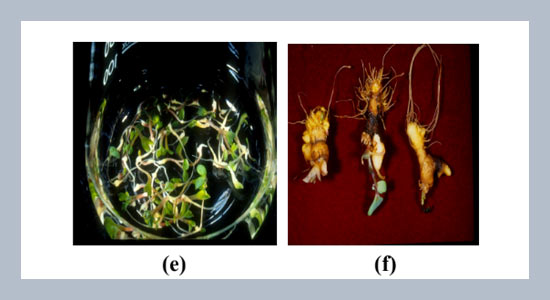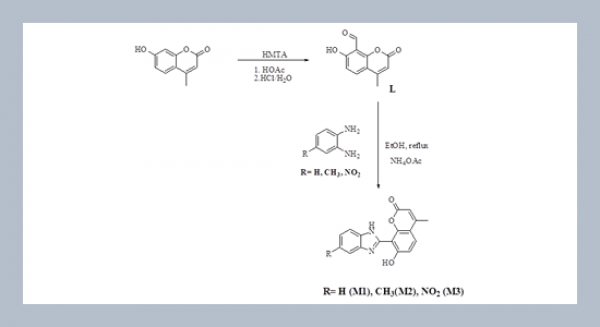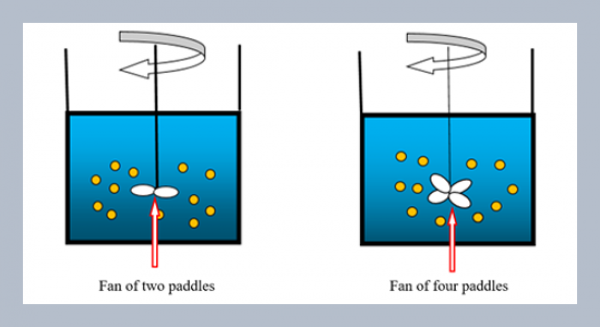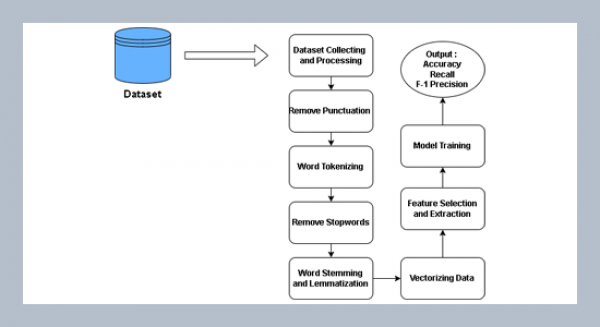REFERENCES
- [1] Balandrin, M.-J. and Klocke, J.-A. 1988. Medicinal, aromatic and industrial materials from plants. In: Bajaj, Y.P.S (Ed.), Biotechnology in Agriculture and Forestry. Medicinal and Aromatic Plants, Springer –Verlag, Berlin, Heidelberg, 4: 1-36.
- [2] Cao, E.-H., Liu, X.-Q., Li, J.-F., Xu, N.-F. and Quin J.-F. 1996. Effect of natural antioxidant tanshinone II –on interaction of lipid peroxidation products and DNA in liver cells. Acta Biophys. Sin., 12: 339-344.
- [3] Chen, A.-H. 1985. Study on application of diosgenin - I. Analysis of Diosgenin constituents of plants from Taiwan. Science Monthly, 43: 79-85.
- [4] Dixon, R.-A. and Paiva, N.-L. 1995. Stressed induced Phenylpropanoid Metabolism. The Plant Cell., 7: 1085-97.
- [5] Gao, Q., Li, G., Wan, Z., Yang, K., Cheng, X., Tang, J., Zhou, H. and Ju, X. 1991. Preliminary infection source of downy mildew of Corydalis yanhusuo W.T. Wang [Chi]. Journal of Chinese Materia Medica, 16: 211-213.
- [6] Gao, Y.-G., Song, Y.-M., Yang, Y.-Y., Tang, J.-X., Liu, W.-F.1979. Pharmocology of tanshinone. Acta Pharmacol Sinica, 14: 75- 81.
- [7] Honda, G., Keezuka, Y., and Tabata, M. 1998. Isolation of anti-dermatophytic substance from the root of Salvia miltiorrhiza. Chemical & Pharmaceutical Bulletin, 36: 408-415.
- [8] Huang, K.-C. 1993. Yan Hu Suo –the dried tuber of Corydalis turtschaninovii Bess f. yanhusu (Papaveraceae). The Pharmacology of Chinese Herbs, CRC Press, Boca Raton, Florida: 141-142.
- [9] Huang, W.-W, Cheng, C.-C., Yeh, F.-T. and Tsay, H.-S. 1993. Tuber culture of Dioscorea doryophora Hance I. Callus induction from different sources of organs and the measurement of Diosgenin content. China Medical College Journal, 2: 151-160.
- [10] Jiang, W., Zhao, Y., Zhao, B.-L., Wan, Q. and Xin, W.- J. 1994. Studies on the scavenging effect of tanshione on lipid free radical of cardiac sarcoplasmic reticulum during peroxidation. Acta Biophys Sin., 10: 685-689.
- [11] Kamigauchi, M. and Iwasa, K. 1994. VI Corydalis spp.: In vitro culture and the biotransformation of protoberberines. In: Y.P.S. Bajaj (ed.), Biotechnology in Agriculture and Forestry, Springer-Verlag, Berlin Heidelberg, 26: 93-105.
- [12] Lu, Y., Foo, and L.-Y. 2002. Polyphenolics of Salvia—a review. Phytochemistry, 59: 117-140.
- [13] Luo, H.-W., Hu, X.-J., Wang, N., and Jaing, J. 1988. Platelet aggregation inhibitors from Salvia miltiorrhiza Bunge Acta Pharm. Sin., 23: 830-834.
- [14] Mulabagal, V. and Tsay, H.-S. 2004a. Plant cell cultures –an alternative and efficient source for the production of biologically important secondary metabolites. International Journal of Applied Science and Engineering, 2, 1: 29-48.
- [15] Mulabagal, V.; Lee, C.-Y., Lo, S.-F, Nalawade, S.-M, Lin, C-Y. and Tsay, H.-S. 2004b. Studies on the production of some important secondary metabolites from medicinal plants by plant tissue cultures. Botanical Bulletin of Academia Sinica, 45: 1-22.
- [16] Nagai, T., Kiyohara, H., Munakata, K., Shirahata, T., Sunazuka, T., Harigaya, Y. and Yamada, H. 2002. Pinellic acid from the tuber of Pinellia ternata Breitenbach as an effective oral adjuvant for nasal influenza vaccine. International Journal of Immunopharmacology, 2: 1183-1193.
- [17] Nagai, T. and H. Yamada. 1994. In vivo anti-influenza virus activity of Kampo (Japnese herbal) medicine “Sho-seiryu-to” and its mode of action. International Journal of Immunopharmacology, 16: 605-613.
- [18] Nalawade, S.-M. and Tsay, H.-S. 2004. In vitro propagation of some important Chinese medicinal plants and their sustainable usage. In vitro Cell Dev. Biologia Plantarum, 40: 143-154.
- [19] Nalawade, S.-M., Sagare, A.-P., Lee, C.-Y., Kao, C.-L. and Tsay, H.-S. 2003. Studies on tissue culture of Chinese medicinal plant resources in Taiwan and their sustainable utilization. Botanical Bulletin of Academia Sinica, 44: 79-98.
- [20] Sagare, A.-P., Lee, Y.-L., Lin, T.-C., Chen, C.-C. and Tsay, H.-S. 2000. Cytokinin-induced somatic embryogenesis and plant regeneration in Corydalis yanhusuo (Fumariaceae) –a medicinal plant. Plant Science, 160: 139-147.
- [21] Shoyama, Y., Hatano, K. and Nishioka, I. 1983a. Rapid and simple multiplication of Pinellia ternata by tissue culture. Planta Medica, 47: 103-105.
- [22] Shoyama, Y., Hatano, K. and Nishioka, I. 1983b. Clonal multiplication of Pinellia ternata by tissue culture. Planta Medica, 49: 14-16.
- [23] Tsay, H.-S., Gau, T.-G. and Chen, C.-C. 1989. Rapid clonal propagation of Pinellia ternata by tissue culture. Plant Cell Reports, 8: 450-454.
- [24] Tsukamoto, T., Yeno, Y. and Ohta, Z. 1936. Glycosides of Dioscorea tokoro I. Dioscin, dioscoerasapotoxin and Diosgenin. Journal of Pharmaceutical Society of Japan, 56: 135.
- [25] Verpoorte, R. 1998. Exploration of nature's chemodiversity: the role of secondary metabolites as leads in drug development. Drug Discovery Today, 3: 232-238.
- [26] Vieira, R.-F. and Skorupa, L.A. 1993. Brazilian medicinal plants gene bank. Acta Hort., 330: 51-58.
- [27] Wu, C.-T., Mulabagal, V., Nalawade, S.-M., Chen, C.-L., Yang, T.-F. and Tsay, H.-S. 2003. Isolation and quantitative analysis of cryptotanshinone, an active quinoid diterpene formed in callus of Salvia miltiorrhiza Bunge. Biological & Pharmaceutical Bulletin, 26: 845-848.
- [28] Yeh, F.-T., Huang, W.-W., Cheng, C.-C., Na, C. and Tsay, H.-S. 1994. Tissue culture of Dioscorea doryophora Hance. II. Establishment of suspension culture and the measurement of diosgenin content. Chinese Agronomy Journal, 4: 257-268.















